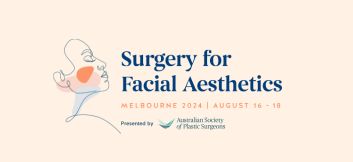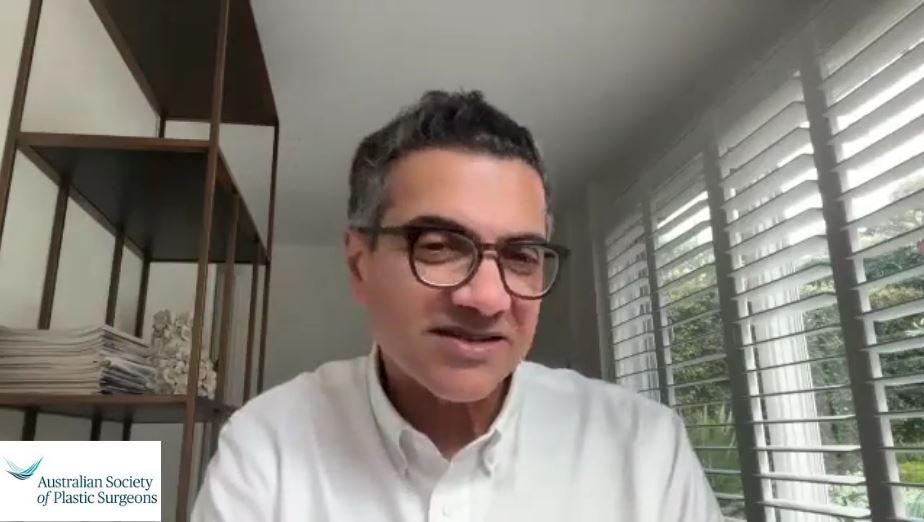Procedures
Thigh Lift
- About Your Specialist Plastic Surgeon
- Cosmetic
- Non-surgical Procedures
- Plastic Surgery Glossary
- Questions for Your Surgeon
- Reconstructive
- Surgical Procedures
- Abdominoplasty (Cosmetic)
- Abdominoplasty (muscle repair postpartum)
- Arm Lift
- Body Contouring
- Body Lift
- Breast Asymmetry Correction
- Breast Augmentation (Implants)
- Breast Implants with Lift
- Breast Lift
- Breast Reconstruction
- Breast Reduction
- Brow Lift
- Burns and Scarring
- Buttocks Lift
- Chin Surgery
- Cleft Lip & Palate
- Ear Surgery
- Eyelid Reduction Surgery
- Facelift Surgery
- Facial Implants
- Fat injection
- Gender Affirming Surgeries
- Gynaecomastia (Male Breast Reduction)
- Hair Replacement Surgery
- Hand Surgery
- Labiaplasty
- Liposuction
- Nipple Enhancement for Inverted Nipples
- Nose Surgery
- Scar Revision
- Skin Cancer
- Thigh Lift
- Tissue Expansion
Thigh Lift
Any surgical or invasive procedure carries risks. Before proceeding, you should seek a second opinion from an appropriately qualified health practitioner.
A thigh lift is designed to tighten the skin and improve the contour of the inner thigh. An incision is made either at the fold where the thigh and the groin join, or down the inner aspect of the thigh toward the knee.
Thigh lift surgery is an individualised procedure and may not be suitable for everyone. Always talk to your Specialist Plastic Surgeon before making a decision. Your surgeon will assess your condition and general health, and plan the treatment that is best suited to you.
Thigh lift surgery is not suitable for people who are:
- Not able to have an anaesthetic
- Prone to bleeding tendencies or have poor healing ability
- Too high risk of having surgical complications
Thigh lifts are not intended strictly for the removal of excess fat. Liposuction alone can remove excess fat deposits where skin has good elasticity and is able to naturally conform to new body contours. In cases where skin elasticity is poor, a combination of liposuction and thigh lift techniques may be recommended.
Thigh lift surgery may be a good option for you if:
- You are physically healthy and you do not have not have medical conditions that can impair healing or increase risk of surgery
- Your weight is relatively stable
- You have excess soft tissue along the inner or medial thigh region and/or the outer thigh
- You are a non-smoker or have stopped smoking
Yes, thigh lift surgery requires anaesthesia. The procedure can done under general anaesthesia, or with a combination of local (or regional) anaesthesia and sedation for patients who require shorter procedures. Modern anaesthesia is safe and effective, but does have some risks. Ask your Specialist Plastic Surgeon and anaesthetist for more information.
Your surgeon and/or anaesthetist will ask you about all the medications you are taking or have taken, and any allergies you may have. Make sure you have an up to date list before the surgery.
Modern surgery is generally safe but does have the potential for risks and complications to occur. Some general risks of surgery include:
- Heavy bleeding from an operated site. This may require a blood transfusion
- Infection that may require treatment with antibiotics or further surgery in some cases
- Allergic reaction to sutures, dressings or antiseptic solutions
- The formation of a large blood clot (haematoma) beneath an incision site may require further surgery
- Pain, bruising and swelling around the operated site(s)
- Slow healing, often related to smoking or diabetes
- Short-term nausea following general anaesthesia and other risks related to anaesthesia
- Complications such as heart attack, pulmonary embolism or stroke may be caused by a blood clot, which can be life threatening
Specific risks and complications associated with thigh lift surgery include:
- Distortion of the genitalia’s contour and appearance, especially in women
- Visible and prominent scars such as keloids and hypertrophic scars. These scars are raised, red and thickened, and may form over healed incisions. They may be itchy, annoying and unsightly but are not a threat to health
- Numbness around operated sites. In most cases this is temporary and will improve over many months
- Skin that does not heal and may require a skin graft
- Restrictive movement to the tightened skin
- Excess fluid accumulation under the skin (known as a seroma) around an operated site that may require one or more drainage procedures with a needle
- The need for at least one blood transfusion for patients who require the removal of a large amount of skin
- Fat that has a poor blood supply may result in a discharge from the surgical wounds or palpable lumps
Thigh lift surgery can be performed in either an accredited day surgery or a hospital, depending on your general health and the extent of the procedure. A short hospital stay may be required in some instances. Your Specialist Plastic Surgeon will advise on the best option for you.
Before undergoing surgery, it is important that you:
- Be as fit as possible to help the recovery process
- Reach your optimal weight
- Check with your surgeon about your medications as some may need to be stopped
- Stop smoking
You will also be asked to provide a complete medical history for your Specialist Plastic Surgeon including any health problems you have had, any medication you are taking or have taken, and any allergies you may have.
You may be advised to stop taking certain medicines such as non-steroidal anti-inflammatory drugs (NSAIDs), aspirin, and medicines that contain aspirin. You may also be asked to stop taking naturopathic substances such as garlic, ginkgo, ginseng and St John’s Wort as they may affect clotting and anaesthesia. Always tell your surgeon EVERYTHING you are taking.
You may also be given medicines to take before the surgery, such as antibiotics.
Your surgeon will also advise you if any other tests are required, such as blood tests, X-ray examinations or an Electrocardiograph (ECG) to assess your heart.
Prepare a “recovery area” in your home. This may include pillows, ice packs, a thermometer and a telephone within easy reach. Make sure you arrange for a relative or friend to drive you to and from the hospital or clinic. Someone should also stay with you for at least 24 hours after you return home.
Your surgeon should give detailed preoperative instructions. Follow them carefully.
Following your surgery, dressings or bandages may be applied to your incisions. You may be wrapped in an elastic bandage or a compression garment to minimize swelling and to support your operation site as it heals. A small, thin tube may also be temporarily placed under the skin to drain any excess blood or fluid that may collect.
Depending on the extent of your procedure, you may need to take a few days off work to rest. Avoid heavy lifting, strenuous exercise, swimming and strenuous sports until advised by your surgeon.
If you experience any of the following symptoms, notify your surgeon immediate:
- Temperature higher than 38°C or chills
- Heavy bleeding from the incisions
- Worsening redness around the incision sites
- Increasing pain or tenderness, or other problems that appear to be worsening
Your surgeon will give you specific instructions on post-operative care. These instructions may include:
- How to care for your surgical site(s) following surgery
- Medications to apply or take orally to aid healing and reduce the risk of infection
- Specific concerns to look for at the surgical site(s) or in your general health
- When to follow-up with your surgeon
Be sure to ask your surgeon specific questions about what you can expect during your individual recovery period, such as:
- Where will I be taken after my surgery is complete?
- What medication will I be given or prescribed after surgery?
- Will I have dressings/bandages after surgery? If so, when will they be removed?
- Are stitches removed? When will they be removed?
- When can I resume normal activity and exercise?
- When do I return for follow-up care?
Yes, thigh lift surgery will result in some visible scars. Your surgeon will limit scar length and try to position each scar in the least conspicuous position. Nonetheless, scars may be more noticeable than you anticipated. It is important that you have realistic expectations of the surgery and that you discuss potential outcomes with your surgeon.
Depending on the amount of excess skin, some patients may require one or more additional procedures to attain their desired body shape.
Cost is always a consideration in elective surgery. Prices for a tummy tuck can vary widely between Specialist Plastic Surgeons. Some factors that may influence the cost include the surgeon’s experience, the type of procedure used and the geographic location of the office.
Costs associated with the procedure may include:
- Surgeon’s fee
- Hospital or surgical facility costs
- Anaesthesia fees
- Prescriptions for medication
- Post-surgery garments
- Medical tests
Your surgeon should welcome any questions you may have regarding fees.
- A surgical incision around the body to remove the “belt” of excess skin and fat and additional incisions that may resemble a bikini bottom pattern
- Circumferential thigh lift:
A surgical procedure to correct sagging of the outer and mid-thigh - General anaesthesia:
Drugs and/or gases used during an operation to relieve pain and alter consciousness - Hematoma:
Blood pooling beneath the skin - Intravenous sedation:
Sedatives administered by injection into a vein to achieve relaxation - Liposuction:
Also called lipoplasty or suction lipectomy, this procedure vacuums out fat from beneath the skin’s surface to reduce fullness - Local anaesthesia:
A drug injected directly to the site of an incision during an operation to relieve pain - Lower body lift:
Surgical procedure to correct sagging of the abdomen, buttocks, groin and outer thighs - Macerated skin:
Excess skin that hangs and becomes wet or infected underneath - Medial thigh lift:
A surgical procedure to correct sagging of the inner thigh - Outer thigh lift:
A surgical procedure to correct sagging of the outer and mid-thigh - Sutures:
Stitches used by surgeons to hold skin and tissue together - Tummy tuck:
A surgical procedure to correct the apron of excess skin hanging over your abdomen
Visit the Plastic Surgery Glossary for more medical terms.
This website is intended to provide you with general information only. This information is not a substitute for advice from your Specialist Plastic Surgeon and does not contain all the known facts about this procedure or every possible side effect of surgery. It is important that you speak to your surgeon before deciding to undergo surgery. If you are not sure about the benefits, risks and limitations of treatment, or anything else relating to your procedure, ask your surgeon to explain. Patient information provided as part of this website is evidence-based and sourced from a range of reputable information providers including the American Society of Plastic Surgeons, Better Health Channel and Mi-tec medical publishing.
Featured Stories

Member Blog with Dr Ellis Choy: What is a Deep Plane Facelift?
Who is the ideal candidate for a deep plane facelift?…
Continue reading
